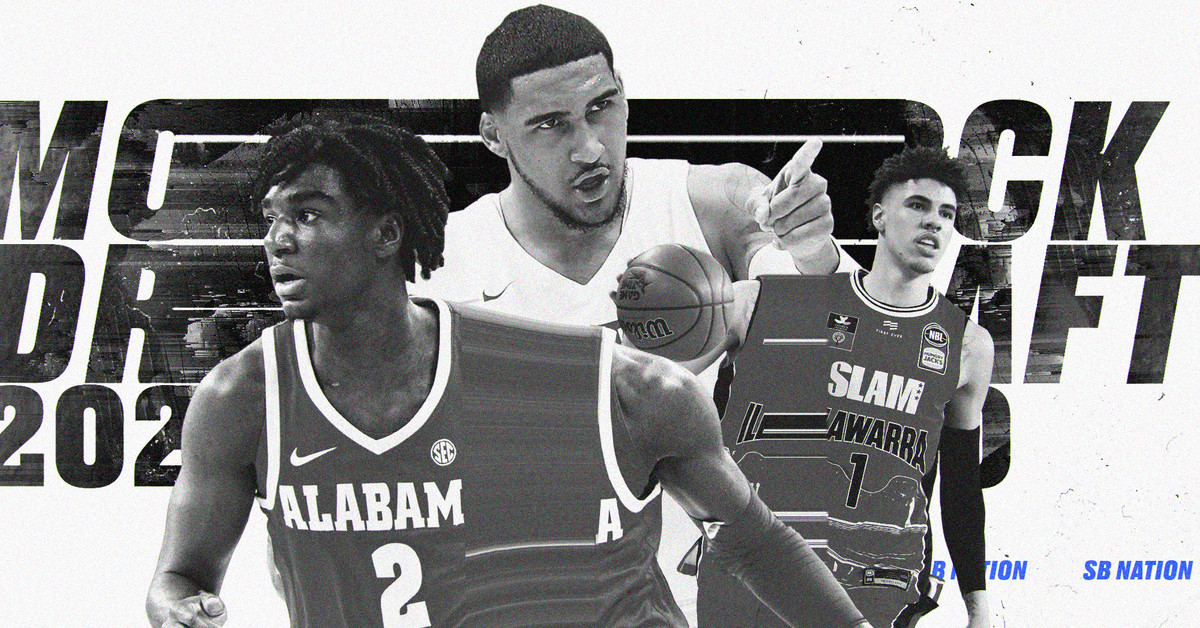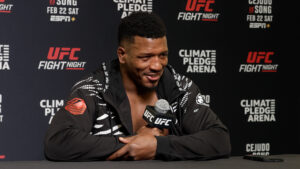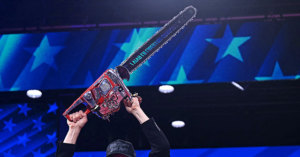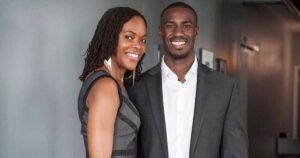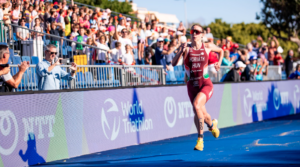https://www.sbnation.com/nba/2020/11/17/21561225/nba-mock-draft-2020-timberwolves-warriors-lamelo-ball
The 2020 NBA Draft will be remembered for its lack of consensus at the top of the board. While last year’s draft had an obvious No. 1 overall pick in Zion Williamson, the projected top picks this season have led to more division among evaluators. There are plenty of talented players in this year’s class, but each are flawed in their own ways. That makes team fit and long-term development more critical than ever.
LaMelo Ball, Anthony Edwards, and James Wiseman have emerged as the likely top three picks. The Minnesota Timberwolves, holding the No. 1 selection, still haven’t given any major indications on what they plan on doing with the pick. So much uncertainty heading into Wednesday’s draft only makes it more fun to debate and project.
For our final mock draft, we decided to guess what teams might do with their pick, and then say what we would do with the same selection. Here’s a full breakdown with blurbs on each player below.
NBA draft predictions 2020
| Pick | Team | Projected pick | Our pick |
|---|---|---|---|
| Pick | Team | Projected pick | Our pick |
| 1 | Timberwolves | LaMelo Ball | LaMelo Ball |
| 2 | Warriors | James Wiseman | Anthony Edwards |
| 3 | Hornets | Anthony Edwards | Onyeka Okongwu |
| 4 | Bulls | Deni Avdija | Killian Hayes |
| 5 | Cavaliers | Obi Toppin | Isaac Okoro |
| 6 | Hawks | Tyrese Haliburton | Devin Vassell |
| 7 | Pistons | Patrick Williams | Tyrese Maxey |
| 8 | Knicks | Killian Hayes | Kira Lewis |
| 9 | Wizards | Onyeka Okongwu | Aleksej Pokuševski |
| 10 | Suns | Devin Vassell | Deni Avdija |
| 11 | Spurs | Isaac Okoro | Patrick Williams |
| 12 | Kings | Aaron Nesmith | James Wiseman |
| 13 | Pelicans | Tyrese Maxey | Obi Toppin |
| 14 | Celtics | Kira Lewis | Tyrese Haliburton |
| 15 | Magic | R.J. Hampton | Desmond Bane |
| 16 | Houston | Saddiq Bey | Josh Green |
| 17 | Wolves | Aleksej Pokuševski | Xavier Tillman |
| 18 | Mavericks | Josh Green | Tyrell Terry |
| 19 | Nets | Precious Achiuwa | RJ Hampton |
| 20 | Heat | Cole Anthony | Cole Anthony |
| 21 | 76ers | Desmond Bane | Aaron Nesmith |
| 22 | Nuggets | Jalen Smith | Saddiq Bey |
| 23 | Jazz | Theo Maledon | Theo Maledon |
| 24 | Pelicans | Tyrell Terry | Grant Riller |
| 25 | Thunder | Zeke Nnaji | Zeke Nnaji |
| 26 | Celtics | Leandro Bolmaro | Leandro Bolmaro |
| 27 | Knicks | Robert Woodard | Robert Woodard |
| 28 | Thunder | Tyler Bey | Isaiah Joe |
| 29 | Raptors | Malachi Flynn | Malachi Flynn |
| 30 | Celtics | Xavier Tillman | Killian Tillie |
1. Minnesota Timberwolves – LaMelo Ball, PG, Illawarra Hawks
Why the Wolves would take him: Ball is far from a perfect prospect, but he still has a strong case as the top overall player in this class. Ball’s potential as an on-ball creator offers a clearer pathway to high-level impact than Anthony Edwards’ scoring ability, James Wiseman’s size, or Deni Avdija’s all-around game. As a 6’7 lead guard, Ball blends tight ball handling ability with tremendous vision and creative passing skills. The Wolves still have plenty of room for improvement in terms of creation even after acquiring D’Angelo Russell last year. If Ball isn’t a perfect complement to Russell and superstar big man Karl-Anthony Towns right now, think of him as a long-term insurance policy in case that pairing can’t live up to the hype.
OUR PICK: LaMelo Ball, G, Illawarra Hawks. We consider Ball to be the top overall talent in the draft, and the present-day fit in Minnesota isn’t enough to move us off that. Even with Russell, the Wolves simply don’t have enough creation ability on the roster to bypass Ball’s special talents. If it doesn’t work out, he should still retain value in a trade. Remember: his brother Lonzo was a big part of the Lakers’ package for Anthony Davis.
2. Golden State Warriors – James Wiseman, C, Memphis
Why the Warriors would take him: Golden State has leaked that it likes pretty much every player projected to go at the top of the draft, but the smoke tying the franchise to Wiseman feels like the strongest. The Warriors must view him as a plug-and-play option at center who gives them a dimension they’ve never really had: a young 7-footer who projects as a lob threat on offense and rim protector on defense around the team’s veteran stars. Wiseman has some very real red flags in terms of his limited versatility on both ends, but at this point it appears certain that teams view him as a lock to go in the top-three.
OUR PICK: Anthony Edwards, G, Georgia. Golden State feels like the best possible place for Edwards to develop. He could contribute wing minutes off the bench in the short-term without the burden of being expected to carry the franchise early in his career. Edwards could focus more on his off-ball scoring ability by attacking closeouts and finding holes as a cutter with defenses focused on Steph Curry and Klay Thompson. If any team can rewire the bad habits that occasionally sabotage Edwards’ all-world physicality simply by making the game easier on him, it’s the Warriors.
3. Charlotte Hornets – Anthony Edwards, G, Georgia
Why the Hornets would take him: Charlotte reportedly covets Wiseman, but if he’s off the board, Edwards’ promise as a takeover scorer might be too much to pass up. Edwards has absolutely elite athletic tools and some truly remarkable shot-making flashes when he’s locked in. The problem is that he often becomes a victim of poor shot selection and doesn’t appear to exhibit a strong feel for the game on either end. Charlotte simply doesn’t have anything close to a perimeter scoring star on its roster, and Edwards offers the potential to be that more than anyone else available.
OUR PICK: Onyeka Okongwu, C, USC. Okongwu is the top big man prospect in this draft class, in our humble estimation. The 6’9 center offers tremendous defensive versatility and efficient-but-low-volume offense that would immediately improve the Hornets. Perhaps more importantly, pairing Okongwu with last year’s first round pick P.J. Washington in the front court would finally give Charlotte an identity as a physical, athletic team that could beat up and burn older, slower bigs around the league.
4. Chicago Bulls – Deni Avdija, F, Maccabi Tel Aviv
Why the Bulls would take him: Chicago’s wish came true when the team finally replaced their overmatched front office with Arturas Karnisovas and Marc Eversley earlier this year. The Bulls’ new leaders have been extremely tight-lipped on everything so far, but speculation since lottery night has tied the team to Avdija. The 6’9 Israeli forward doesn’t have a signature skill, but he’s solid across the board and plays an aggressive but high-IQ game. Maybe he doesn’t have the long-term upside teams ideally want in a top-five pick, but at least he doesn’t have some of the glaring weaknesses other players in this class possess.
OUR PICK: Killian Hayes, G, Ulm. The Bulls have badly needed a lead offensive creator since the disappointing Jimmy Butler trade on draft night three years ago. While Chicago has a decent collection of young talent, none of it really fits into place without an offensive engine. Hayes has the most creation potential in this class outside of Ball, and he also projects as a really good defensive guard. Concerns about his first step explosiveness and three-point shooting are a bit overblown. He is both the best player and best fit for the Bulls at No. 4 if the board breaks as expected.
5. Cleveland Cavaliers – Obi Toppin, C/F, Dayton
Why the Cavs would take him: Cleveland has drafted high-upside offensive players with serious defensive question marks since LeBron James left for Los Angeles. Toppin would certainly fit that bill. The 6’9 forward was the best offensive player in college basketball last year, running to the rim for huge dunks and stretching out the range on his jump shot (he hit 39 percent of his threes) during a breakout redshirt sophomore season. He also played his college ball at nearby Dayton, which would perhaps give Cavs fans something to cheer for after a couple long seasons. For as special as Toppin’s offense could potentially be, his defense wouldn’t help what’s already one of the league’s worst units.
OUR PICK: Isaac Okoro, F, Auburn. The Cavs have finished dead last in the league in defensive efficiency each of the last two seasons. Okoro is the best defensive prospect in this class. The young forward from Auburn can shutdown a variety of player types at the point of attack, and always seems to be on-time when he needs to rotate. He really struggles to shoot offensively, but can still provide value by getting to the foul line and making smart passes in advantage situations. If Cleveland could teach him how to hit spot-up threes (a big ask), he would look like one of the better players in this draft class five years from now.
6. Atlanta Hawks – Tyrese Haliburton, G, Iowa State
Why the Hawks would take him: Haliburton has some bankable skills that make him appealing in a draft without much consensus at the top. The 6’5 guard projects as a nice complementary piece because he’s an excellent spot-up shooter and makes quick and accurate passes while spotting up on the perimeter. The bigger issue is he can’t really breakdown the defense off the dribble, so he needs to play with a more dynamic ball handler. While Haliburton put up an absurd 3.8 percent steal rate as a sophomore at ISU — a stat that often translates to pro success — his painfully skinny frame makes any defensive projection difficult at this stage.
OUR PICK: Devin Vassell, F, Florida State. Vassell fits the mold of the 3-and-D wing as an elite help defender who provides spot-up shooting on offense. While his limited creation ability is underwhelming for a top-six pick on the perimeter, he’s simply the type of player every good team needs. Whether Atlanta keeps this pick or trades it, Vassell deserves to go in this range.
7. Detroit Pistons – Patrick Williams, F, Florida State
Why the Pistons would take him: Williams has reportedly been shooting up draft boards over the last month or two, with the Pistons’ apparent interest fueling his rise. The 6’8 combo forward didn’t start a game for FSU this year, but he’s a big, long, and athletic prospect with promising flashes of all-around skill. Williams is also the youngest American-born player in this class, so he has plenty of time to tap into the two-way versatility he hinted at during his one-and-done year in college.
OUR PICK: Tyrese Maxey, G, Kentucky. Maxey probably isn’t the answer to the Pistons’ forever search for a lead offensive creator, but he’s the type of player who will make that person’s life easier whenever they get him. Maxey is an aggressive rim attacker on offense who can make tough finishes through or around contact in the paint. His three-point numbers were underwhelming, but the fact that he’s a great free throw shooter should mean he has room to grow there. He also plays bigger than his size with a 6’6 wingspan and aggressive point of attack defense.
8. New York Knicks – Killian Hayes, G, Ulm
Why the Knicks would take him: Hayes would be a steal at No. 8 based on raw talent and would also fill New York’s biggest need. A 6’5 lefty point guard out of France, Hayes showed skill and poise in running the pick-and-roll this season for Ulm. He has nice developing pull-up shooting ability and also a reliable floater he can go to when the defense is overplaying potential passing lanes. He’s also arguably the most advanced defensive guard in the class. Hayes’ detractors will point to his lack of explosive athleticism, struggles as a spot-up shooter, and extremely shaky right hand, but he’s already an effective two-way player despite so much room for continued growth.
OUR PICK: Kira Lewis, G, Alabama: If Hayes is off the board, Lewis would be a wonderful consolation prize for New York. The 6’2 guard out of Alabama is the fastest player in the class with the ball in his hands, offering an ability to break down opposing defenses that the Knicks currently do not have on the roster. Lewis isn’t the most polished finisher or passer just yet, but his combination of rim attacking drives and pretty good spot-up shooting makes him a nice addition for New York’s rebuild.
9. Washington Wizards – Onyeka Okongwu, C, USC
Why the Wizards would take him: Washington badly needs front court defense, and Okongwu is an excellent defensive center prospect. At 6’9, 245 pounds, Okongwu has the strength to battle bigger centers on the ground, and the quickness to defend ball handlers out on the perimeter. He’s also a pogo-stick leaper who is quick off the floor as a rebounder and shot blocker. Okongwu may never score with volume offensively, but he’s efficient in every chance he gets, whether they come on putbacks, cuts, post-ups, or rolls to the rim. Washington should feel great about this pick if he’s still on the board at No. 9.
OUR PICK: Aleksej Pokuševski, F, Serbia. With Okongwu off the board, the Wiz decide to say YOLO and take a chance on the player who might have the highest long-term upside of any in the class. ‘Poku’ is a 7-footer who flashes shooting, passing, and ball handling skills while being the youngest player in the draft at 18 years old. His rail-thin frame is a legitimate concern, as is his overall lack of tape playing the second division of the Greek league, but Washington is in a position to swing for the fences on the future with this pick because their present isn’t that inspiring.
10. Phoenix Suns – Devin Vassell, F, Florida State
Why the Suns would take him: Vassell would be a great value for a Suns team that just acquired Chris Paul. The Florida State sophomore is the most polished 3-and-D prospect in this class, showing advanced help defense instincts and shooting ability on spot-ups and when running off screens. Vassell would be wise to work on raising his three-point volume in the league so he can achieve as much offensive impact as possible. On a team that already has one awesome, young 3-and-D wing in Mikal Bridges, adding Vassell would only give Phoenix more versatility.
OUR PICK: Deni Avdija, F, Maccabi Tel Aviv. An alternate reality where Avdija slips to Phoenix would be one of my favorite fits in the draft. The Suns need more playmaking in the front court and they need an aggressive complement to Deandre Ayton at the four, and Deni would check both boxes.
11. San Antonio Spurs – Isaac Okoro, F, Auburn
Why the Spurs would take him: San Antonio has done well before drafting young, athletic wings who are already stars on the defensive end but struggle to shoot. In all seriousness, any Kawhi Leonard comps for Okoro would be irresponsibly optimistic, but this is certainly an archetype of player the Spurs have helped develop in the past. Okoro badly needs to work on his spot-up shooting ability, but even the present state of his offense isn’t exactly a lost cause. He’s a monster at getting to the foul line and can make easy passing reads in the halfcourt. Did we mention he’s probably the best defensive prospect in this draft? The Spurs would love to see him on the board at No. 11.
OUR PICK: Patrick Williams, F, Florida. With Okoro off the board, Williams offers a nice combination of raw tools that can be molded into a versatile player at both ends of the floor. Williams is big, strong, and long, offering some real defensive playmaking ability and secondary rim protection with the promise of spot-up shooting. As the youngest college player in the draft, Williams’ skill set remains a work in progress, but he’s an enticing developmental prospect for a team with the patience and dedication to turn him into the best player he can be.
12. Sacramento Kings – Aaron Nesmith, SG, Vanderbilt
Why the Kings would take him: The Kings are perpetually looking for help on the wing and looking for shooting, and Nesmith checks both boxes. The sophomore hit 52.2 percent of his threes on 8.2 attempts per game as a sophomore at Vanderbilt, an astonishing rise after he hit under 34 percent from deep as a freshman. Nesmith doesn’t offer much as a passer or creator (he averaged less than one assist per game), but there’s hope he can contribute defensively with plus length (6’10 wingspan) for a shooting guard. NBA teams would have loved to see him prove his hot shooting over the course of a full season, but unfortunately he suffered a stress fracture in his foot that ended his year after just 14 games.
Our pick: James Wiseman, C, Memphis. I’m lower on Wiseman than the consensus because a) he isn’t super quick off the floor athletically, b) he isn’t a plus shooter or passer offensively, and c) he’ll likely only thrive in drop coverage against the pick-and-roll defensively. Even if his general lack of versatility limits his ceiling somewhat in the modern game, he still deserves to be a lottery pick because of his potential as a lob catcher and rim protector. Wiseman is a lock to go top-three. The Kings would be overjoyed in whatever alternate reality this could play out in.
13. New Orleans Pelicans – Tyrese Maxey, G, Kentucky
Why the Pelicans would take him: Maxey said the Pelicans were the only team he worked out for, and it sure seems like he’d be a nice complement to their young core. While the 6’3 guard isn’t a natural floor general, he is an aggressive scorer who’s great at getting to the rim and finishing from a variety of angles. Shooting will be his swing skill, but a free throw percentage in the 80s should inspire optimism. Defensively, Maxey plays bigger than his size because he’s long (6’6 wingspan) and physical. This would be an excellent fit for both the player and the team.
Our pick: Obi Toppin, F/C, Dayton. Toppin slides down my own personal board a bit because of his major defensive shortcomings, but there’s no denying how dynamic he is offensively. I admit this fit might not make much sense with Zion Williamson and Jaxson Hayes already in the front court, but Toppin feels like the clear best talent on the board and that is really all you need to take him.
14. Boston Celtics – Kira Lewis, PG, Alabama
Why the Celtics would take him: Lewis could go as high as No. 7 or No. 8, but it would be a blessing for both him and the Celtics if he fell to No. 14. Boston needs another ball handler who can put pressure on the rim, and that’s Lewis’ game. While he was just about the youngest sophomore in the country this year at Alabama — he entered the program as a 17-year-old freshman — his ability to get into the paint and hit spot-up threes could make him an immediate contributor for a team that could use an upgrade at backup point guard. Think of this as long-term insurance for Kemba Walker’s age and injury issues while also benefiting one of the very best teams in the East in the short-term.
OUR PICK: Tyrese Haliburton, G, Iowa State. Haliburton should be long gone by this point, but the late lottery feels like a more appropriate spot for his skill set. While Haliburton is basically the opposite of Lewis in a lot of ways — he’s allergic to getting to the rim — his ability to hit spot-up threes and make quick decisions as a passer helps him project as a solid role player long-term. He’d be excellent in Boston.
15. Orlando Magic – R.J. Hampton, G, New Zealand Breakers
Why the Magic would take him: Is Hampton’s wingspan (reportedly 6’7) long enough to earn consideration in the first round from the Magic? We kid, but targeting length is what Orlando has been known for under John Hammond. After focusing on adding big forwards and centers to the front court mix in recent years, it’s about time Orlando drafts a guard. Hampton has a strong argument as the best one available at this point. While he’s not yet a natural floor general, the 6’5 Dallas native can aggressively attack the rim and run offense as a secondary creator. He gives Orlando some long-term upside while also filling a need on the bench right now.
OUR PICK: Desmond Bane, G, TCU. Bane has emerged as everyone’s favorite sleeper — I credit the fantastic work of draft scout Spencer Pearlman — after a stellar four-year career and excellent senior season at TCU. Bane has a case as the best shooter in the draft, hitting 44 percent of his three-pointers and finishing in the 90th percentile on spot-up attempts nationwide. Bane also has some secondary creator potential and holds his own defensively. He may not have the flashy upside of a one-and-done prospect like Hampton, but he’s a more complete player right now.
16. Houston Rockets – Saddiq Bey, F, Villanova
Why the Rockets would take him: After dealing Robert Covington to Portland to acquire this pick, it’s clear Houston is in rebuild mode. Bey offers value as a polished offensive wing who should be able to contribute in the short-term. The 6’8 sophomore is coming off breakout year at Villanova where he made 45 percent of his threes and scored efficiently as a pick-and-roll ball handler (88th percentile) and in transition (93rd percentile). There are questions about what position Bey will defend and how much two-way versatility his game really has, but this would likely be an easy pick for the Rockets if he’s still on the board.
OUR PICK: Josh Green, G, Arizona. Another wing, Green is a far superior athlete (one of the draft’s best) and projects as a more impactful defender. He was also pretty good as a spot-up shooter at Arizona, hitting 36 percent of his threes and finishing in the 77th percentile on spot-ups.
17. Minnesota Timberwolves – Aleksej Pokuševski, F/C, Serbia
Why the Wolves would take him: Pokuševski is the year’s biggest boom-or-bust lottery ticket. Despite a rail-thin frame and limited film, Poku offers the promise of a 7-foot four man who can dribble, pass, and shoot. The Wolves are in position to take a swing for the fences if he’s still on the board at No. 17.
OUR PICK: Xavier Tillman, C, Michigan State. With Poku off the board, Tillman would provide an excellent interior defender for a team that doesn’t really have one right now. Tillman isn’t going to sky above the rim for blocks and rebounds, but he’s a strong and physical paint presence with sharp instincts who could handle a sizable role as a rookie.
18. Dallas Mavericks – Josh Green, G, Arizona
Why the Mavericks would take him: Dallas needs defense, it needs a wing, and it will always take a little spot-up shooting around Luka Doncic. Green fits the bill on all three, projecting as one of the draft’s very best pure athletes while also flashing his chops as a catch-and-shoot threat during his one season at Arizona.
OUR PICK: Tyrell Terry, G, Stanford. Terry is a 6’2 guard who’s more comfortable running around screens to get open from three than he is driving the ball to the rim on offense. That seems like a nice fit next to Doncic.
19. Brooklyn Nets – Precious Achiuwa, F, Memphis
Why the Nets would take him: Achiuwa would add length and athleticism to the Brooklyn front court while developing slowly behind the team’s headline stars. In the short-term, Achiuwa could be an energy big who makes a living in transition in short spurts. Down the road, perhaps he could become a small ball five who runs more traditional centers off the floor.
OUR PICK: R.J. Hampton, G, New Zealand Breakers: Hampton is an aggressive 6’5 combo guard who thrives going to the basket, but needs to fine-tune his shooting and decision-making. The Nets are in a good position to take a developmental guard who can learn from Kevin Durant, Kyrie Irving, and Steve Nash without the expectation of contributing big minutes this season.
20. Miami Heat – Cole Anthony, G, North Carolina
Why the Heat would take him: Anthony was considered by some as a potential top-five pick coming into the season before a rough freshman year at UNC that included a torn meniscus. While there have been whispers that NBA evaluators were always a tad skeptical of his fit in the league, his pull-up shooting and secondary pick-and-roll chops are appealing enough to bet on at this point in the first round.
OUR PICK: Cole Anthony, G, North Carolina. A little tough love from Miami goes a long way. The Heat could use another secondary creator with Goran Dragic getting older, and Anthony would have time to grow into the role. At this point, Miami is one of the best possible landing spots for pretty much any prospect in this draft.
21. Philadelphia 76ers – Desmond Bane, G, TCU
Why the 76ers would take him: The Sixers always need shooting and Bane is possibly the best shooter in this class. His ability to attack closeouts and make easy reads as a passer should also pair well with Ben Simmons and Joel Embiid. Philly found an impact rookie in another four-year college player Matissee Thybulle late in the first round last year, and Bane could pay similar dividends this season.
OUR PICK: Aaron Nesmith, G, Vanderbilt. Nesmith is possibly even more dynamic as a long-range shooter than Bane, but his game is also isn’t quite as multi-faceted. He would be a great fit in Philly but should be off the board long before this selection.
22. Denver Nuggets – Jalen Smith, F/C, Maryland
Why the Nuggets would take him: Smith is a 6’10 big man who hit can hit threes and provide some rim protection. He’ll have to prove he can survive when teams target him in the pick-and-roll defensively, but his offensive skill set should play anywhere. Denver feels like a good fit for any potential floor spacer like Smith.
OUR PICK: Saddiq Bey, F, Villanova. Bey can really shoot at 6’8, but questions about what position he guards on defensively pushes him down my board a little bit. He would be a really great fit with Nikola Jokic as a spot-up shooter, but he’ll likely be long gone by this point.
23. Utah Jazz – Theo Maledon, G, ASVEL Lyon
Why the Jazz would take him: Maledon is a 6’5 guard who won’t dust defenders off the dribble, but still brings value with his pick-and-roll playmaking and spot-up shooting. He already proved he could hold his own as an 18-year-old in Euroleague, which seems like a good sign for his future. The Jazz could use a young guard to groom alongside Donovan Mitchell as Mike Conley gets older.
OUR PICK: Theo Maledon, G, ASVEL Lyon. Maledon might not have super-high upside like some thought at this time last year, but he does feel like a relatively high floor young guard with bankable NBA skills. It feels like he could develop into a nice player down the road with a good developmental staff in Utah.
24. New Orleans Pelicans – Tyrell Terry, G, Stanford
Why the Pelicans would take him: Terry established himself as one of the best shooters in this class during a breakout freshman season at Stanford to become a surprise one-and-done. Terry can shoot it off the dribble or from spot-ups with a quick release and deep range. While he’s undersized for a point guard and might need a few years to develop, his offensive skill set is interesting enough to bet on at this point in the first round.
OUR PICK: Grant Riller, G, Charleston. Don’t write off Riller just because he played at a small school and will turn 24 years old as a rookie. The 6’3 guard is an explosive three-level scorer with a quick first step and incredible finishing ability. He’d give the Pelicans a shot of perimeter scoring ability that would feel like a welcome addition.
25. Oklahoma City Thunder – Zeke Nnaji, C/F, Arizona
Why the Thunder would take him: The Thunder are in tear down mode and can afford to take a developmental prospect they think might have some long-term upside. Nnaji fits the bill. The 6’11 big man is a bouncy athlete and strong finisher who also has some spot-up shooting potential. The question will be if he can defend enough to stick at the five, but he is agile enough in space to compete once he bulks up.
OUR PICK: Zeke Nnaji, C/F, Arizona. I like Zeke’s upside more than some of the other bigs available in this range with bigger names or better college resumes. In the short-term, he fits the ‘energy big’ mold well.
26. Boston Celtics – Leandro Bolmaro, G, Barcelona
Why the Celtics would take him: The Celtics enter this draft with three picks, and if they keep all of them, it makes sense to use one on a draft-and-stash. Bolmaro is a perfect candidate. The 6’7 guard from Argentina flashed his playmaking potential and defensive instincts in a limited role with Barcelona this year. He’s in a good situation to develop over the next year while the Celtics monitor his progress from afar.
OUR PICK: Leandro Bolmaro, G, Barcelona. A draft-and-stash is a natural fit for the Celtics’ situation, and Bolmaro offers a decent upside play at this point in the first round.
27. New York Knicks – Robert Woodard, F, Mississippi State
Why the Knicks would take him: Woodard measured at 6’7, 230 pounds with a 7’2 wingspan, which counts as ideal size for an NBA combo forward. He generally plays a low-usage offensive game, but he proved to be a capable spot-up shooter during his two years at Mississippi State. This is a good spot to bet on a potential 3-and-D forward for New York.
OUR PICK: Robert Woodard, F, Mississippi State. Remember, the Knicks got this pick by using their cap space to sign a free agent (Marcus Morris) who they flipped at the deadline to the Clippers for this selection. The Knicks actually did something smart!
28. Oklahoma City Thunder – Tyler Bey, F, Colorado
Why the Thunder would take him: Bey is one of the most impressive defensive prospects in this class. The 6’9 forward is an instinctual help defender who is constantly disrupting actions with his length and athleticism. While his thin frame might limit his versatility a tad, his spot-up shooting potential on offense helps give him a clear pathway to value.
OUR PICK: Isaiah Joe, G, Arkansas: Joe has a thin frame and will need to prove he can handle the physicality of the NBA, but there might not be a more prolific shooter in this class. As a sophomore at Arkansas, Joe shot a three-pointer on 76 percent of his attempts, knocking down 34.2 percent from behind the line. His ability to get off a good look from three in any situation plus his natural touch makes him a good upside gamble at this point in the first round.
29. Toronto Raptors – Malachi Flynn, G, San Diego State
Why the Raptors would take him: Toronto could use some insurance in the backcourt with Fred VanVleet approaching free agency, and Flynn would be a nice value at this pick. While he isn’t the biggest or fastest point guard, Flynn was super productive in his first season at San Diego State and doesn’t have any major holes in his skill set.
OUR PICK: Malachi Flynn, G, San Diego State. The Raptors know a thing or two about how to develop veteran college players into two-way performers in the league. Flynn would be a nice long-term replacement for VanVleet or Kyle Lowry down the road.
30. Boston Celtics – Xavier Tillman, C, Michigan State
Why the Celtics would take him: Boston needs a center and Tillman is an awesome value at this point. Tillman was one of the nation’s most impactful players over the last 1.5 seasons as a 6’8 big man who dominated the paint defensively and scored efficiently on his offensive attempts. While he’s not an above-the-rim threat on either end, Tillman is an intimidating force on the floor who should be ready for a role as a rookie.
OUR PICK: Killian Tillie, F, Gonzaga. Tillie has had terrible luck with injuries throughout his college career, but when he was on the floor he was one of the most skilled forwards in the country. The 6’8 Frenchman has deep range on his jump shot and can also finish efficiently in the paint. Boston could use another forward with plus shooting and a strong feel for the game to add to their bench.
